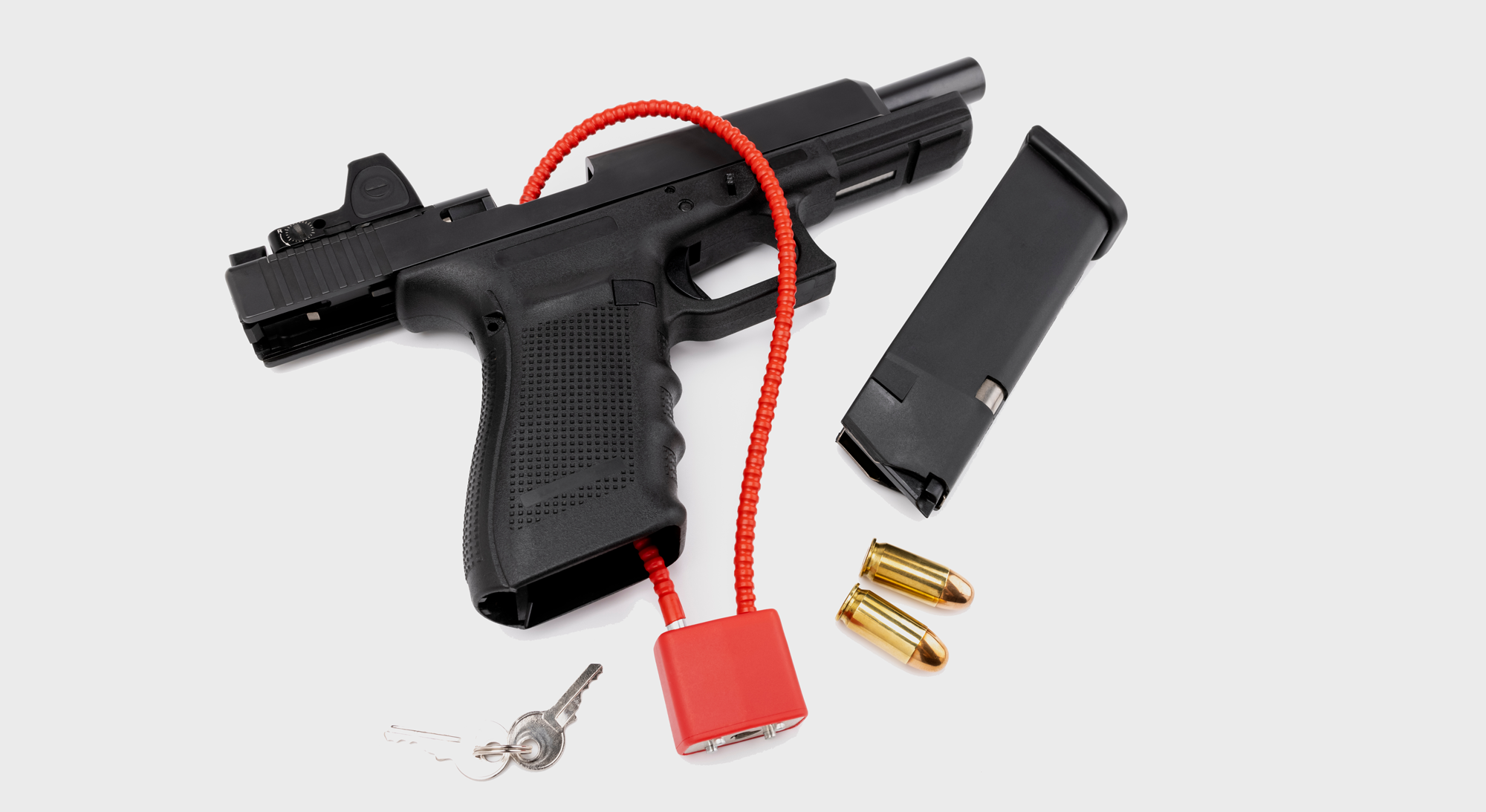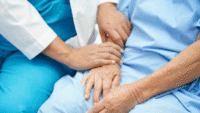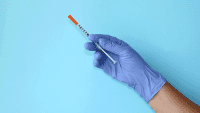Assess firearm access and educate patients on safe gun storage.
- Gun violence remains a devastating public health epidemic in the United States.
- This study evaluated nurse knowledge and comfort with assessing firearm access and providing education on safe gun storage.
- Results can help inform hospital policy and nursing educational initiatives aimed at improving safe gun storage for patients and the public at large
Gun violence remains a public health epidemic. According to the Centers for Disease Control and Prevention’s most recent data, 48,204 people died as a result of firearm injuries in 2022. Of those, 27,032 deaths resulted from suicide and 19,651 from homicide. The National Electronic Injury Surveillance System estimated that 171,000 non-fatal firearm injuries occurred in 2022.* After analyzing data from 2008 to 2018, Song and colleagues reported that changes in medical spending related to nonfatal firearm injury increased four times from baseline, averaging $30,000 per survivor the first year after injury.
The impact of lives lost, the sustained suffering from nonfatal injuries, the emotional burden on families and loved ones, and the financial strain placed on the healthcare system by firearms is catastrophic and preventable.
Healthcare’s role in reducing gun violence
The role of nurses in firearm safety
In 2017, two of us (Sheppard and Hall) and our colleagues conducted a study aimed at evaluating nurses’ knowledge of and comfort with assessing patient access to firearms and providing education regarding firearm safety and safe gun storage (SGS). Participants (n=42) were limited to those working on a general medical unit and a psychiatric unit in our large urban hospital.
More recently, we collaborated with other colleagues to expand on our previous work by surveying a larger sample size of nurses from various inpatient practice settings to better understand their knowledge and comfort levels with assessing firearm access and educating patients about SGS. We began with a review of the literature.
The literature search
We searched the literature for articles published between 2000 and 2023. Keywords included “safe gun storage,” “gun violence prevention,” “teaching patients about firearm injury prevention,” “assessing firearm access,” and “healthcare costs of firearm injury.”
Several medical centers have created firearm injury prevention programs for first-year residents and trauma providers, and in 2021, the Emergency Nurses Association launched a revised firearm injury prevention continuing education program. However, we found little evidence regarding other firearm injury prevention programs for nursing students or nurses in other specialties.
A call to action has been issued for the nursing profession to address the public health crisis of gun violence. In 2022, the American Academy of Nursing released a position statement on firearm safety and violence prevention with policy recommendations that include preparing nurses to conduct health screenings, patient counseling, and family-, school-, and community-based violence prevention training and programs to address risk factors, including unintentional shootings, intimate partner violence, toxic stress, bullying, and mental health. In addition, the American Nurses Association (ANA) has long advocated for firearm safety and violence prevention. (Learn more about firearm safety at bit.ly/4dGC3GH.)
Wolf and colleagues surveyed 1,424 emergency department (ED) nurses about their perception of patient risk for firearm injury and how it relates to the process of screening, assessment, counseling, and discharge education. Between 21.8% and 43.5% reported asking patients about in-home access to firearms, which depended on the presentation. In response to the statement, “I have received adequate professional education in firearm safety,” 18.6% responded “somewhat disagree” and 38.8% responded “strongly disagree.” The respondents named support as a significant factor in whether they performed a firearm assessment. They also described challenges with regard to broaching the subject in a way that patients wouldn’t find confrontational.
Cho and Dowdell surveyed 54 pediatric advanced practice RNs (APRNs) about their knowledge of firearm safety, health promotion strategies, and preventive interventions. More than 70% reported asking parents about guns in the home, most frequently with new patients. Although most APRNs reported feeling knowledgeable enough to assess and inform parents about safe firearm storage, 56.4% cited a lack of available resources and institutional policies.
In 2020, Sheppard and colleagues reported data from a survey of 42 nurses working on psychiatric and medical units about their knowledge and comfort level with assessing inpatients’ firearm access and providing SGS education. More than 50% of nurses from both units said they weren’t familiar with state laws on gun storage. Among the respondents, 86% from the medical unit and 100% from the psychiatric unit agreed that if patient education material were available, they would feel comfortable providing this information to patients. In addition, 81% of medical unit nurses and 90% of psychiatric unit nurses indicated a class on firearm safety and SGS would help them feel more comfortable performing firearm access assessment and providing SGS patient education.
In 2023, Sheppard and colleagues reported data from the qualitative arm of the 2020 study. They conducted nine interviews, in which four themes emerged: the sensitive nature of the topic, nurses’ opinions of their role, knowledge required to educate patients about SGS, and necessary cues for nurses to ask relevant questions.
Bhalakia and colleagues surveyed 76 pediatric healthcare practitioners about their knowledge, attitudes, current practices, barriers, and preferred methods of counseling on firearm safety. Reported barriers included insufficient time, unfamiliarity with guns and how to store them safely, and concern that parents might respond aggressively. The survey respondents said that they preferred providing a handout followed by a brief counseling session.
A literature review by Drake and colleagues found little to no firearm safety instruction in undergraduate or graduate nursing curricula, continuing education, or on-site training. Recommendations for nursing curriculum include developing policies and risk screening tools that incorporate state and federal laws regarding firearm ownership, information about risks associated with firearms, and instruction on safely securing firearms.
These studies highlight the need for nurse education, patient resources, organizational support, and policies.
The study
Using the same cross-sectional survey design from our previous study, we invited RNs from 14 inpatient units (ED observation, vascular and cardiac, two pediatric, four medical, and five surgical) at our large academic medical center in Massachusetts to participate. A total of 688 RNs received an email that explained the study and included a link to the Research Electronic Data Capture (REDCap®) software survey. Only study team members had access to the study data. We also invited the RNs to participate in a private follow-up interview to elaborate on their responses. Follow-up interviews aren’t included in this analysis. The institutional review board (IRB) approved the study, and each unit’s nurse director endorsed it. Per the IRB, survey completion implied consent. We didn’t collect any personal identifiable data.
We launched the study in February 2020, when an unprecedented surge of patients with coronavirus infections upended hospital operations and necessitated redeployments of RNs across the hospital system. These emergency conditions likely contributed to the initial response rate (18.9%). After a 4-month suspension of email reminders about survey completion, we resumed with a $10 gift card incentive. The response rate increased to 23.7%.
The data
A total of 163 nurses completed the 27-question survey. We created the survey based on existing questionnaires used in mixed clinician cohorts and current clinical practice, as well as after consultation with a survey research professional at our organization. Although this survey was informed by previous work, it wasn’t formally tested with existing tools to measure external validity. We surveyed respondents at only one time point, so we couldn’t test reliability of the survey over time. (See full survey)
We displayed quantitative demographic data with descriptive statistics, and we analyzed the data using Stata® Version 13 (StataCorp, 2017). For comparing categorical answers across unit types, we used chi-squared tests, and we set the statistical significance at P ≤0.05.
Participants responded to questions related to firearm knowledge, their comfort with assessing firearm access and providing SGS education, and barriers and facilitators to patient assessment and education. They also reported on professional development and patient education strategies. ( See detailed breakdown of responses)






Firearm knowledge
Nearly 56% of respondents correctly identified that the U.S. gun violence mortality rate is approximately 40,000 people annually; almost 40% were unsure. Only 13% of nurses correctly answered that Massachusetts has the lowest rate of gun deaths in the country; again, about 40% were unsure. Of the respondents, 34% correctly answered that homicides aren’t the majority of firearm-related deaths each year (the majority are suicides); 27% were unsure. We found that 62% of nurses correctly answered that Massachusetts state law requires guns to be securely locked in the home; 26% were unsure. Also, 53% correctly answered that Massachusetts state law doesn’t prohibit clinicians from asking about guns in the home; 32% were unsure.
Assessing firearm access, providing SGS education
We organized responses to questions regarding comfort by using a 4-point Likert scale that ranged from “uncomfortable” to “comfortable.” For the purposes of this discussion, “comfortable” includes those who responded “comfortable” and “somewhat comfortable”; “uncomfortable” includes those who responded “uncomfortable” and “somewhat uncomfortable.” Fewer than half of nurses (45.4%) reported feeling comfortable with asking patients about gun ownership or accessibility; 53% reported feeling comfortable asking patients about gun storage. Only 36% of participants reported feeling comfortable providing SGS education. However, if a patient SGS pamphlet were available, the percentage of nurses who reported that they would feel comfortable providing education to patients rose to 89%.
We found statistically significant differences among groups of nurses with different lengths of employment with regard to their comfort level in assessing firearm ownership and accessibility. Nurses with the least employment length (0 to 4 years) reported similar levels of comfort asking about firearm accessibility as nurses with 10 to 20 years of employment. Nurses employed for 5 to 9 years reported the lowest levels of comfort. (See What’s your comfort level?)


Barriers to assessment and education
Nurses could select more than one barrier and write in other comments. Most repondents reported lack of knowledge about firearm safety and SGS (135 responses) and lack of educational information to share with patients (134 responses) as the most significant barriers. Other barriers included not knowing what to do with the information collected (106 responses), not having time (34 responses), and feeling unsafe (16 responses).
Write-in comments included: “I am unsure how to start the conversation with the patient. I’m nervous that the patient might get upset that I’ve asked them about it. If it was built into the admission questions in Epic®, I think it would make it easier to bring up with patients.” Other comments included “Some people are offended and feel it’s not my business,” and “Is it clinically necessary?”
Facilitators to assessment and education
Nurses could choose one or more assessment and education facilitators and write in other comments. Top facilitators included policies to document firearm assessment information (138 responses), education about firearm safety and SGS (132 responses), and educational information for patients to read on their own (124 responses). Having a safety protocol in place received 115 responses, and having educational information to share and review with patients received 117 responses. Write-in comments included “Having a ‘scripted’ response as to why we are asking” and “Unless you are a gun owner, they probably don’t want your opinion.”
Professional development and patient education strategies
Many respondents (84%) reported that a class on firearm safety would help them feel more comfortable assessing and educating patients. Participants could choose one or more of three learning strategies. Healthstream® online training received 93 responses, a 1-hour class received 86 responses, and a half-day course received 42. One respondent wrote in the comment section, “I have an LTC [license to carry], I know the laws.”
Most of the respondents (96%) reported no knowledge of the patient SGS pamphlet created by our institution’s gun violence prevention committee. The top endorsed patient education strategy was a firearm safety and SGS pamphlet for patient education (86%); 27% of nurses endorsed a brief video.
Opportunities for assessment and education
We found the firearm knowledge answers enlightening. Percentages for incorrect or unsure responses ranged from 37% to 86%. The results indicate a definite need for firearm injury prevention education. Nurses should have familiarity with firearm mortality statistics and state firearm laws so they can have informed discussions with patients about gun violence prevention.
In Sheppard’s 2020 study, 76% of psychiatric nurses and 52% of medical nurses reported lack of knowledge with Massachusetts state law on SGS. In Wolf’s study of ED nurses, 56% either “somewhat disagreed” or “strongly disagreed” with the statement “I have received adequate professional education in firearm injury.” In conjunction with data from our study, these results show that nurses need and desire firearm injury prevention education.
Comfort-level questions produced interesting results. Nurses with less than 4 and greater than 10 years of experience expressed the same level of comfort with assessing firearm access. Perhaps newer nurses perceive a greater level of comfort than is actually demonstrated in their practice.
Approximately 50% of nurses reported being uncomfortable with asking patients about gun accessibility and storage. These results are similar to Sheppard’s study in which about 50% of medical nurses reported feeling uncomfortable assessing firearm access. In contrast, all of the psychiatric nurses, who must assess firearm access if a patient reports suicidal or homicidal ideation, reported feeling comfortable with asking about firearm ownership/accessibility and all except two reported being comfortable asking patients about gun storage. Wolf’s study showed similar results, with 63% of ED nurses answering, “strongly agree” or “somewhat agree” to the statement, “I am comfortable discussing firearm safety with patients and families.” ED nurses and psychiatric nurses encounter higher-risk patients and may have a greater comfort level because they assess firearm access more frequently. Educational program development should take past experiences and comfort levels into account.
In our study, nearly two-thirds of all nurses reported feeling uncomfortable with providing patient SGS education. However, 89% of nurses responded that they would feel comfortable providing information if they had access to a pamphlet. Perhaps simply having patient educational information can help allay some unease.
The most common barriers selected by respondents included lack of knowledge, lack of patient educational information, and not knowing what to do with the information collected. Barriers chosen by fewer respondents included feeling unsafe and limited time. Developing educational programs and organizational policies requires an understanding of what prevents nurses from conducting firearm injury prevention discussions. One respondent suggested a scripted response, which would provide standardization and normalization. Offering firearm injury prevention classes and developing patient educational materials and documentation policies can support nurses in their patient education efforts.
Write-in comments about barriers help clarify how nurses feel about performing this assessment. Respondents shared feeling “unsure how to start the conversation” and concern that the “patient might get upset” or “offended.” In Wolf’s study, nurses also expressed challenges with entering into a firearm discussion without being “confrontational.” Bhalakia reported that pediatric providers expressed concern that parents might respond aggressively when asked about firearm access.
Nurses in our study suggested that firearm injury prevention education for nurses, a documentation policy, a safety protocol for back-up support, and patient educational information would help them have these conversations. Respondents to Sheppard’s study endorsed these same facilitators. Nurses in Wolf’s study suggested having colleagues available to further assess risk. One safety protocol proposal includes having hospital-based police department personnel available if a nurse feels uncomfortable or can’t answer all of a patient’s questions. A team-based approach may help nurses feel supported.
More than 80% of nurses endorsed having a firearm safety class to help them feel more comfortable discussing this topic. An online training module and a 1-hour class were the most popular options. Similarly, nurses in Sheppard’s study strongly supported a class on firearm safety and SGS. Results from Wolf’s study indicate that nurses haven’t received adequate firearm safety training. Nurse education can help raise awareness, allay fears, and ensure that nurses feel safe and confident when assessing firearm access and providing patient education.
We were alarmed to find that most of the nurses in our study had no knowledge of our organization’s existing patient firearm safety and SGS pamphlet. This printable brochure is readily available online. Because most nurses recommended a pamphlet rather than a video as the most effective patient education strategy, we must teach nurses how to access the already available material.
Study limitations
Our study encountered several limitations. For example, the survey lacked established reliability and validity. In addition, the sample size was limited to a single academic medical center, which may limit generalizability to nurses in other locations. It’s unclear how the geographic location (northeast United States) influenced nurses’ responses about gun violence. Self-reported data hold the inherent risk of bias.
Survey questions included several prepopulated answers, which may have prevented more diverse ideas. The survey didn’t ask nurses about their actual practice of firearm access and storage assessment, and the electronic health record doesn’t require nurses to document asking patients about firearm storage, for example.
It’s not clear how the primarily female sample population may influence reported knowledge of and comfort with firearms. The responses across unit types also were unbalanced, which reduces the power to detect differences among unit types.
Although some survey questions (not all) included the option to write in “free text” responses to further elaborate on a given answer, participants used this option infrequently.
Current and future steps
Nursing leadership at our study site positively received the results from the 2020 Sheppard study, which led to the development of an interprofessional committee charged with creating a firearm injury prevention class. The class reviews gun violence mortality statistics, risk factors for suicide and intimate partner violence, applicable state laws, institution-wide security policies, and how to talk with patients about SGS options. The instructors reinforce giving a printable pamphlet describing SGS options to patients.
Although this class has proven instructive, we’ve encountered challenges in engaging the thousands of direct patient care nurses at our health system. In an effort to educate these nurses who have limited time, we’ve begun conducting brief professional development classes on individual units to highlight gun violence prevention statistics, state laws, and how to access the patient firearm safety handout.
Future research should include larger sample sizes and organizations from across the country. Evaluation of newly developed educational initiatives should explore whether nurses effectively assess firearm access and educate patients about SGS.
Opportunities to promote safety
Many opportunities exist for nurses to assess patients for firearm safety and discuss SGS. For example, children with access to unsecured firearms are at a greater risk for unintentional injury, so pediatric nurses can ask parents about firearm access and storage. Safety assessments necessary for patients at risk for suicide position psychiatric nurses to provide education. Medical-surgical nurses also can assess firearm access and provide fundamental SGS education to patients. If this education occurs on a broad scale, more patients will understand proper SGS techniques, which may result in the safe storage of more firearms and ultimately mitigate rates of suicide, homicide, and unintentional injury.
Kimberly Smith Sheppard is a clinical research nurse at the Massachusetts General Hospital (MGH) Translational and Clinical Research Centers (TCRC) in Boston. Kathryn Hall is the nurse director of the MGH TCRC and assistant professor at the MGH Institute of Health Professions (IHP). Julia Michael Mancuso is a senior clinical research coordinator at MGH TCRC. Elise Gettings is a peri-operative nurse at MGH. Meaghan Rudolph is a psychiatric clinical nurse specialist at MGH and an instructor at MGH IHP. Mary Oram is a nurse practitioner at Boston Center for Memory in Newton, Massachusetts. Lisa Quinn is an assistant professor at MGH IHP and a nurse practitioner at MGH.
Acknowledgment
Funding for this project was provided by Everytown for Gun Safety, New York, NY, and the National Center for Advancing Translational Sciences (Harvard Catalyst / Harvard Clinical and Translational Science Center), Grant Number 1UL1TR002541-01.
American Nurse Journal. 2024; 19(10). Doi: 10.51256/ANJ102414
References
American Academy of Nursing. American Academy of Nursing statement on firearm safety and violence prevention. November 17, 2022. https://aannet.org/page/firearm-safety-violence-prevention
Bhalakia AM, DeMello A, Beckworth K, Johnson B, Naik-Mathuria B. Pediatric providers’ knowledge, attitudes, practice, and barriers to firearms safety counseling. South Med J. 2021;114(10):636-9. doi:10.14423/SMJ.0000000000001303
Centers for Disease Control and Prevention. WISQARS fatal and nonfatal injury reports: Injury counts and rates. bit.ly/3yCGG6i
Cho AN, Dowdell EB. Unintentional gun violence in the home: A survey of pediatric advanced practice nurses’ preventive measures. J Pediatr Health Care. 2020;34(1):23-9. doi:10.1016/j.pedhc.2019.06.010
Drake SA, McDaniel M, Pepper C. A scoping review of nursing education for firearm safety. Nurse Educ Today. 2023;121:105713. doi:10.1016/j.nedt.2023.105713
Emergency Nurses Association. Emergency Nurses Association debuts firearms injury prevention education program. April 14, 2021. bit.ly/3YGyM6w
Lee CJ, Herrera J, Miller J, Moffit C, Wiczynski H. The role of nurses in firearm safety. Am Nurse J. 2023;18(11):12-5. doi:10.51256/ANJ112312 https://www.myamericannurse.com/the-role-of-nurses-in-firearm-safety/
Rickert CG, Felopulos G, Shoults B, et al. Development and implementation of a novel case-based gun violence prevention training program for first-year residents. Acad Med. 2022;97(10):1479-83. doi:10.1097/ACM.0000000000004656
Roush K. Gun violence: The carnage at home. Am J Nurs. 2022;122(8):7. doi:10.1097/01.NAJ.0000854916.98693.45
Sheppard KS, Griffith C, Suschana E, Gettings E, Rudolph M, Mancuso J. Assessing firearm access and providing safe gun storage education. Medsurg Nurs. 2023;32(4):237-43, 266.
Sheppard KS, Hall K, Carney J, et al. Original research: Nurses’ knowledge and comfort with assessing inpatients’ firearm access and providing education on safe gun storage. Am J Nurs. 2020;120(9):26-35. doi:10.1097/01.NAJ.0000697636.34423.45
Song Z, Zubizarreta JR, Giuriato M, Paulos E, Koh KA. Changes in health care spending, use, and clinical outcomes after nonfatal firearm injuries among survivors and family members: A cohort study. Ann Intern Med. 2022;175(6):795-803. doi:10.7326/M21-2812
StataCorp. Stata Statistical Software: Release 15. College Station, TX: StataCorp LLC. 2017.
Stokes SC, McFadden NR, Salcedo ES, et al. Firearm safety counseling for patients: An interactive curriculum for trauma providers. MedEdPORTAL. 2022;18:11237. Published 2022 May 10. doi:10.15766/mep_2374-8265.11237
Wolf LA, Delao AM, Perhats C, et al. Emergency nurses’ perceptions of risk for firearm injury and its effect on assessment practices: A mixed methods study. J Emerg Nurs. 2019;45(1):54-66.e2. doi:10.1016/j.jen.2018.09.010
Key words: firearm safety, safe gun storage, firearm access assessment


















